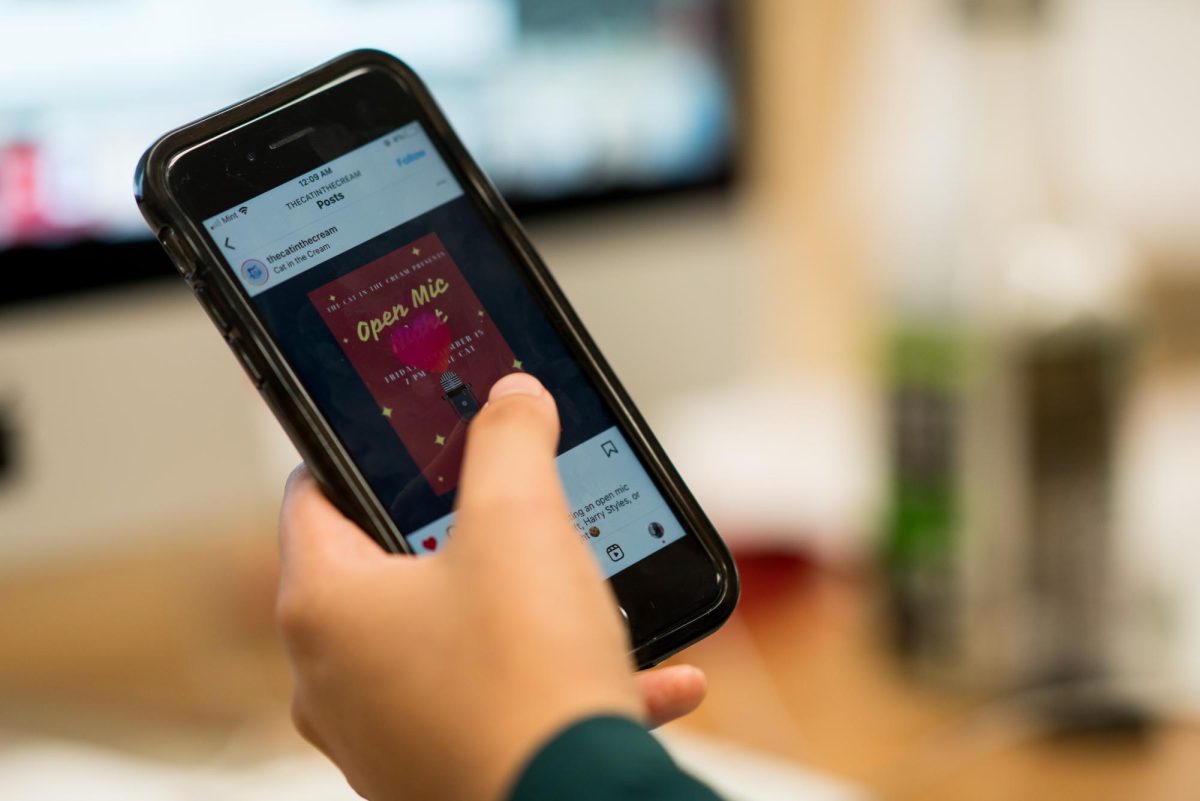Social media, particularly Instagram, has become a crucial part of many student organizations’ outreach.
“If a club or a group has Instagram, it feels so much more professional and real,” College second-year Sage Reddish, former manager of @oberlin_sosha, said.
Survivors of Sexual Harm & Allies uses their Instagram as a digital, hyper-specific bulletin board. The majority of their posts are posters announcing events, with very few actual photos scattered throughout. The job of SOSHA’s social media manager is mainly to create Canva designs whenever the club needs to make an announcement or advertise an event.
That does not mean running an Instagram account is just slapping some text on a background and calling it a day. In order to seem professional, accounts have to maintain an aesthetically cohesive and pleasing image.
“I would just go to Canva and then make a little Instagram post,” Reddish said. “It usually takes about 20 minutes, [but] sometimes when you have a ton of homework it can also be a lot.”
College second-year Max Lang commented on the process for making posts.
“It does get demanding, because graphic design kind of stuff can take a lot of time,” Lang, manager of @oberlin_equestrian and @oberlinobertones, said. “Sometimes the ideas come to me faster than others, but sometimes it does take a good minute for me to get a poster together or member profile together.”
Not everyone’s experience is uniform. For one thing, established organizations tend to have a bigger team working on the account. While Lang is one of only two people logged into the Obertones’ Instagram and is the only one actively posting, College second-year Maja Saveva, who manages @thecatinthecream, has a different experience.
“The Cat has a few social media managers, although the roles are not super specific or set, so we kind of split the work amongst each other,” Saveva said.
Furthermore, for a business like the Cat in the Cream, which is already well-known and loved by students regardless of its Instagram presence, less effort has to be put into maintaining an engaged audience online.
“The Cat only uses Instagram to post our posters, and we don’t really check our stats,” Saveva said. Meanwhile, Lang said they do use some of Instagram’s engagement features “to gauge what people are really interacting with.”
Lang is in a unique position as the manager of @oberlin_equestrian. Unlike many of Oberlin’s popular student organizations, Canva designs are almost entirely absent from @oberlin_equestrian, with the exception of their two most recent posts. In fact, besides their two posts announcing ’23–24 leadership, the account has been dormant for nearly a year, making it so Lang not only has to run their social media, but also revive it from the dead and bring it up to par with other accounts.
This dormancy is not a result of poor social media management.
“During COVID … there was just not a lot of team activity at all,” Lang explained. “Even last year, I was on the team, but we maybe went to one show.” However, an active Instagram is an essential part of the team’s comeback: “Now that the team is ramping up to pre-COVID levels, I’m trying to get the social media back to what it was as well,” Lang said.
It has only been in the past few years that student organizations have had a social media presence, with even the bigger accounts such as @thecatinthecream not starting theirs until 2017. The dependence on posters versus Instagram varies depending on how well-established the organization already is.
In regards to SOSHA, Reddish believes that Instagram serves an important role for a club’s outreach. “Instagram is going to be more effective, I think it catches people’s attention a little bit more,” Reddish said. “I think posters can sometimes go unnoticed. If you’re looking at someone’s story or feed, that’s really noticeable.”
While social media may be a good foundation for marketing and awareness, for Oberlin’s organizations with a broader target audience, it may take some more time before digital catches on.
Regardless of how information is spread most effectively, or how much goes into a club’s Instagram, social media is here to stay as a staple of outreach. With social media, students can now curate what clubs they see information for, rather than hoping they happen upon a poster of something they find intriguing. They have a new medium to discover organizations they may not have seen otherwise.








